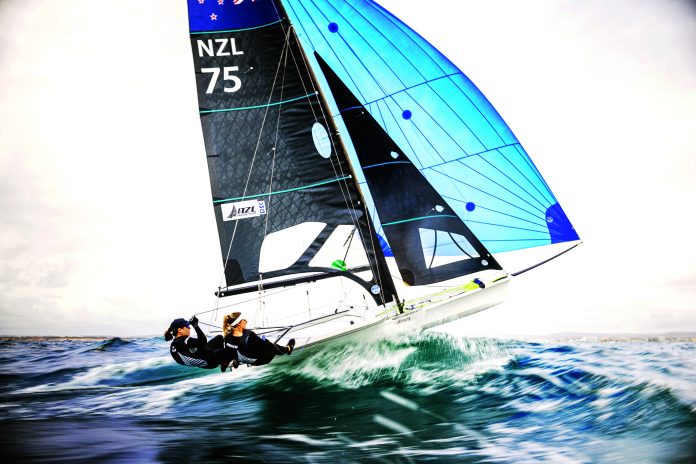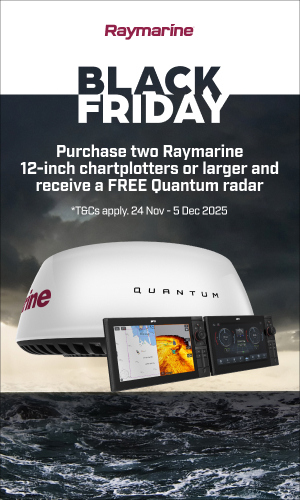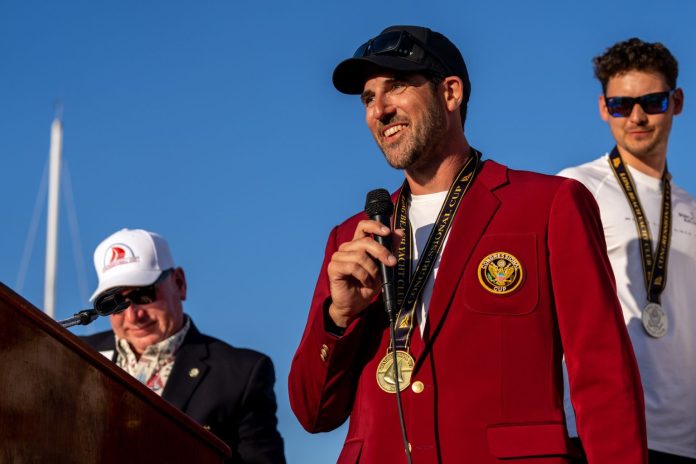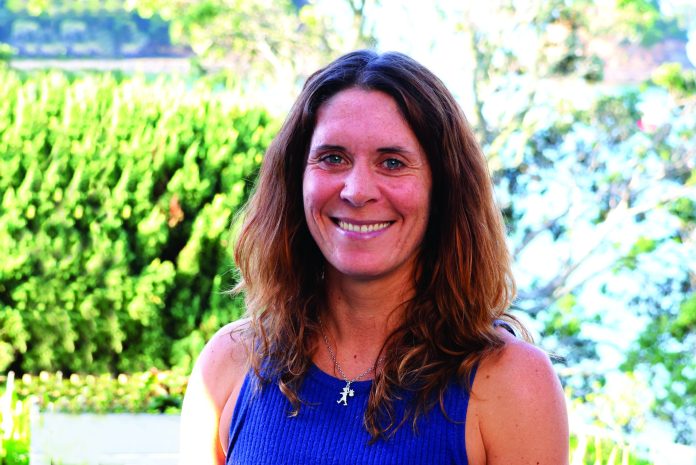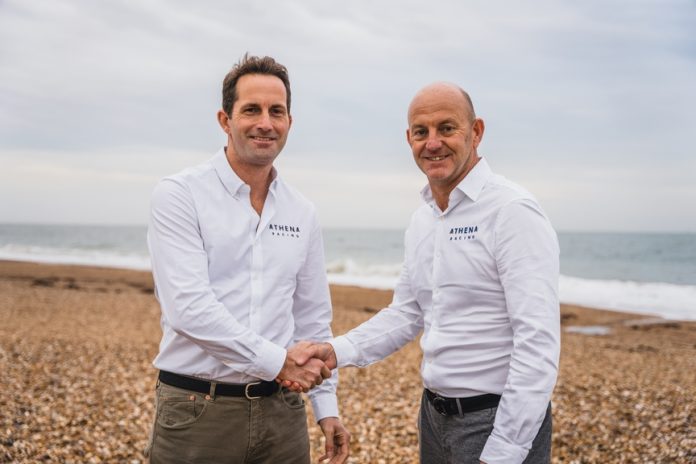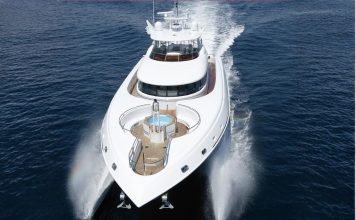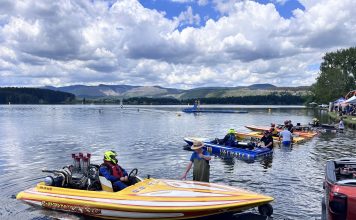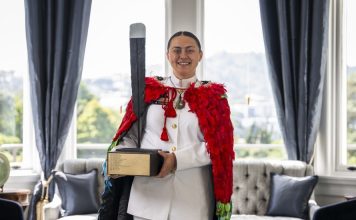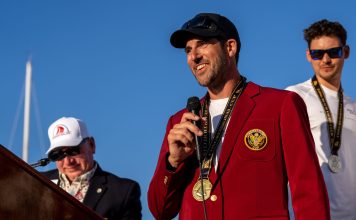When Jo Aleh steps aboard Emirates Team New Zealand’s AC75, she does so as a sailor who has earned her place — not as a quota hire. A double Olympic medallist and world champion, she’s one of the sharpest tacticians in the sport. Yet even she concedes the awkwardness surrounding her selection.
In an interview with Radio New Zealand, Aleh said: “None of us like a quota. As a woman who’s been involved with yachting for a long time, I don’t want to be on something because of a quota, but you’ve kind of got to take what you can get sometimes.”
That honesty captures the paradox facing women in high-performance sport: you can’t prove what you’re capable of until someone gives you the chance but if that chance comes by rule rather than choice, your credibility risks being questioned from the start.
Quotas: the uncomfortable catalyst
The America’s Cup rule mandating one woman among the five-person crew isn’t universally liked. Team NZ’s CEO Grant Dalton told RNZ he was “quite verbally against it” because it felt tokenistic. He later admitted that without such a rule, “instinctively the guys are going to pick the guys.” That’s not hostility, it’s habit.
Change, especially in elite sport, rarely happens without a shove. The Women’s America’s Cup provided the proof of concept; the quota ensures the door stays open long enough for talent like Aleh to walk through.
Three sports, same blind spot
We’ve seen the same tension play out in SailGP, where every F50 team must carry at least one woman. On paper, it looks progressive. In practice, most female sailors have been placed in the strategist role, a position that offers visibility but often limits direct control of the boat. It can easily appear tokenistic, particularly when the strategist’s input depends on the helm’s willingness to listen.
There are exceptions and they matter. Martine Grael, the Olympic gold medallist, serves as skipper for the Mubadala Brazil SailGP Team, leading from the helm rather than watching from behind it. In the United States team, Anna Weis competes as grinder and jib trimmer, a physically demanding role that puts her right in the heart of the boat’s operation.
Those two stand as proof that ability, not gender, should determine position. But they also highlight how rare such examples still are.
Even the 2025 Admiral’s Cup introduced a similar rule: at least one woman required onboard each team’s crew. Some saw it as progressive, others as performative. Yet the outcome was quietly effective. The rule brought talented women sailors into competitive offshore teams, where their skills and professionalism quickly silenced any doubts.
Like the America’s Cup, the Admiral’s Cup rule doesn’t guarantee equality of outcome, but it guarantees visibility. It forces tradition-bound teams to consider skillsets they might otherwise overlook; a small but meaningful shift in the sport’s culture.
Three sports, same mother. Born of technology and precision, each still hesitant to hand women full control.
What genuine inclusion looks like
If you want to see how to do mixed-gender racing right, look beyond sailing to the E1 Series, the new electric-powerboat championship. Its format guarantees equality without pretense. Each team fields one male and one female pilot who share the exact same driving duties: equal seat time, equal responsibility, equal recognition.
Every competitor races identical RaceBird electric boats (sound familiar?), removing any equipment advantage and placing the result squarely on skill. There’s no “female position” or “training pathway”; both drivers race, period.
To back it up, the UIM E1 Pilot Academy recruits and trains athletes of all genders from different sports backgrounds. That’s genuine inclusion — authentic integration by design, not token representation.
Rowing is following suit. After successful trials, World Rowing will introduce a mixed-gender eight-person boat at the 2025 World Championships, with the goal of becoming an Olympic event. Equal numbers of men and women, synchronised effort, shared success. No quotas needed, just structure that rewards teamwork.
These examples show that inclusion doesn’t have to mean compromise. It means building formats where skill naturally leads, regardless of who brings it.
The pathway problem
SailGP has its own answer in the SailGP Women’s Pathway Program, designed to integrate female athletes into the professional league. It’s a good initiative, but it raises two question. The first: why do women need a separate “pathway” at all? The second: will it guarantee a position beyond strategist?
No such program exists for men, because men are already assumed to belong. Until that double standard changes, equality will remain procedural, not cultural.
Earned, not handed
Jo Aleh never needed a quota to prove herself. But she did need a system willing to give her a fair start. That’s what this rule, however imperfect, finally provides. The modern AC75 rewards composure, intellect, and coordination over brute strength. The era of pedal grinders is gone; precision now wins races. That suits sailors like Aleh perfectly.
Her challenge now isn’t proving she belongs, it’s showing how far women can go when belonging is assumed from the start.
The real victory
True progress will come when a woman is selected for a Cup team simply because she’s the best sailor available. Until then, this awkward transition matters. Representation alone isn’t the goal; authentic inclusion is.
When Aleh lines up to defend the Auld Mug in Naples in 2027, she won’t just represent women in sailing. She’ll represent what happens when opportunity meets talent, and tokenism is finally replaced by trust.
In my view, that’s not diversity for its own sake. That’s evolution.








